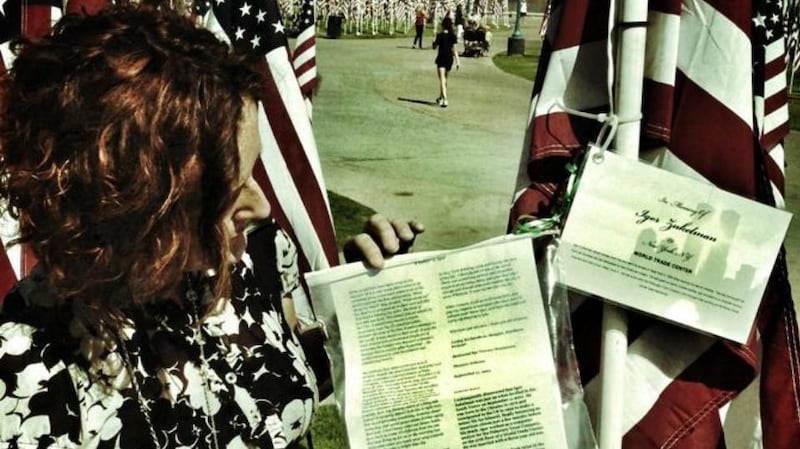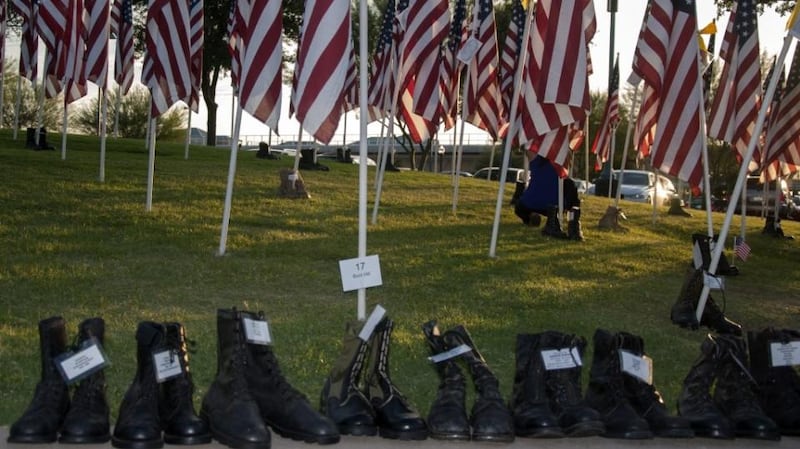I have yet to be disappointed by what happens when my online world collides with its “real” counterpart. Landing on the virtual doorsteps of people in the middle of lives parallel to my own, I have been beautifully blindsided by unexpected coincidences and exchanges of truths that may not otherwise have seen the light of day.
In my virtual home, it is easy to pull up a chair and trade ideas and opinions with people I may never meet about why Seamus Heaney will always matter; about the beautiful, bruised Northern Ireland that both scared me and shaped me; about breast cancer and the pain of it, the politics of it and the shiver of fear it brings when it moves in; and, about clearing a path to things that matter most and things that need to be said.
A few summers ago, I got lost in the blogosphere and somehow landed at the personal blog of Lesley Richardson, author of The Lonely Life of Biddy Weir. Within minutes, I was completely at home, howling with laughter as we traded stories about surviving our adolescence in Northern Ireland long before curly-hair products had been invented.
Both of us born in 1963 in neighbouring counties, we have much in common; along with the curls, we each have a teenage daughter, we share a love for Seamus Heaney and for Belfast, and a need to write.
On September 11th, Lesley and I talked about the jolt to our psyches on that grotesque morning in 2001 when it seemed as though the entire world could barely breathe for fear of what might happen next. Our little girls were then just four years old, safe in their preschools on opposite sides of the Atlantic Ocean - hers still in Northern Ireland, and mine in Phoenix, Arizona.
When the news tumbled out of New York City, Lesley and I stopped in our tracks, heartsick, the familiar terror we both knew as children of The Troubles reawakened in us. Blindsided again. We had grown complacent, I suppose, with the Good Friday Agreement and talk of peace and renewal. How could we have so quickly forgotten that anything can happen. Anything. We should have known better.
“Anything can happen.
The tallest towers
Be overturned, those in high places daunted
Those overlooked regarded.”
~ Seamus Heaney

Did we used to be more resigned to that maxim? I don’t know. Growing up where we did, when we did, we were confounded by the bombs and bullets, the brutality and barbarism on both sides, but at the same time, somehow - and sadly - resigned to it. We held tight to the ordinary rituals, the ones we thought we could control, and we tried not to be afraid that “it” might happen to us. We never fully gave into the fear as we went to our schools and our shops or out to the pub on a Friday night. Had we given into the fear, we would never have left our homes.
Writing
For me, one such routine entailed writing in a diary every day. Unprompted, I could fill page after page with stories, some true, others embellished. Along with now embarrassing angst-filled poetry, bits of social commentary, newspaper clippings, dried red leaves from maple trees on the edges of country roads upstate New York on my first trip to America, concert tickets, letters never sent, and things I wished I had said at the time. There was always plenty of evidence of a life being lived well in spite of the troubles that swirled around and within us.
A young woman, just starting out on my own, I had time and space from which to carve out a tight hour each day to set words down on a page. The world was my oyster. But the business of adult living eventually got in my way, the way it does, and writing in my diary, my once cherished ritual, gave way to more mundane tasks and responsibilities that turned out to be far less important, far more costly, and often not even good for me.
Just when I thought I had my house in order, a breast cancer diagnosis caught me off-guard - with a jolt. And I began to write again, the way I had done in that old diary. For me. I kept it private at first, afraid to hit “publish”. Inexplicably, I felt like I was speaking out of turn or that I would get in trouble for expressing aloud my indignation about the disease that would interrupt my daughter’s adolescence and make me make room in the next ten years for appointments with oncologists.
As I encountered others like me in the online space, I grew bolder and started to set down my story against the more mainstream stories of celebrities who have "conquered" cancer or women who "have it all". I could lean back rather than "lean in" obediently just because all the other women are doing it. I can take stock and trade. I can light the match rather than not burn the bridge that served only to keep me down and in the dark. My blog (timetoconsiderthelilies.com) is my home away from home, so I keep writing. For myself. I suppose cancer made a writer out of me.
For Lesley, it was the death of someone she never met, a Russian immigrant who worked on the 97th floor of 2 World Trade Center, that prompted her to start writing for herself. A jolt that helped her find her writer's voice. Although she has been writing for years and makes a living writing for other people, it was not until she took a creative writing class in September 2002 that she started to write the kind of writing that lays bare those things that matter. I am glad that she did, because it led me to her, and it led her to publish her first novel The Lonely Life of Biddy Weir.
Lesley's first homework assignment in that class was ostensibly simple - to write a letter. To anyone. About anything. Just a letter. Stuck and not knowing what to write about or to whom, she turned on her TV on the second anniversary of 9/11 and began watching the memorial service. For two and a half hours, she listened, as the names of almost 3,000 dead were read, and when they got to the last name on the list, Igor Zukelman, she knew the letter she would write. Her letter to Igor became a tribute to all those who died:
“I’ve been wondering, Igor, what you would have made of your death, of all the deaths, and the aftermath of that catastrophic and grotesquely historic couple of hours. I come from a place that has been tarnished by terrorism for over 30 years. My country has lived with death, hatred and evil for almost as long as I can remember, and many of the atrocities we have witnessed have left wounds that for some will never heal. Perhaps the saddest thing that I have learnt from living here is that hate breeds hate, ignorance breeds intolerance and, for those who are locked in their insular beliefs, forgiveness is not an option.”
When I read Lesley’s letter to Igor, I knew what to do. I promised to print it out and deliver it to the Healing Field Memorial in Tempe, Arizona, where I would attach it to the flagpole erected there for Igor Zukelman, a flag flying for him along with 2,995 others.

Healing
On Wednesday September 11th, 2013, before going to work, I went to the Healing Field. My best friend brought a plastic bag to protect Lesley’s letter from the impending rainstorm and a bit of green ribbon to attach it to the pole. Unlike me, my best friend thinks of everything.
Making our way up the little hill upon which Igor’s flagpole stands, we could not help but look up, uncomfortably aware of the field’s proximity to Sky Harbor Airport and the roar of airplanes above ensuring we will not forget the sound of those planes before they hurtled into the Twin Towers.
Letters and paper flowers, candles aglow in the bright morning, tiny stuffed bears on the grass at the bottom of six flagpoles - I have been cleaved in two by such things before, things left to honour innocent lives snuffed out by terrorism. The tragic lesson learned growing up in Northern Ireland is that terrorism is a horrible equalizer. Babies, children, parents, grandparents, those without names or families or homes or good health - it matters not. In a terrorist attack, they are all “legitimate targets”.
And in this field of healing, flanked by row upon row of flagpoles set five feet apart, we can stretch out our arms and touch two lives at a time, lest we forget what happened on September 11th, 2001.
The 9/11 memorial in Tempe, Arizona is heartbreakingly beautiful, each one of its 2,996 flags signifying a life taken on that horrific autumn morning. There are shows of patriotism and silent prayers for the dead; a mournful “Taps” pierces the air every hour on the hour, and everyone falls silent and still; then bagpipes and then Amazing Grace. Yellow ribbons wrapped around and around those flagpoles encircling the field, represent the valor of those “first responders”, whose duty is to protect and serve those within. Ribbons as blue as that September morning sky wound around flagpoles in the heart of the Field, for the flight crew members who perished. On the grass, for veterans lost that day, pair after pair of combat boots.
In cities here and across the globe, wreaths are laid, bells ring out, and names are rubbed in pencil on cherished scraps of paper. We say their names. We remember them.
I found Igor’s flag and discovered he was born in the Ukraine in 1972. An immigrant like me, he came to America to make a better life for himself and finally landed a job as a computer analyst for the Fiduciary Trust Company. He worked on the 97th floor of 2 World Trade Center. He was married with a three-year-old son, and he had become an American citizen just months before he died.
I said his name and attached Lesley’s letter to the flag pole. Before turning away, a whisper, “Godspeed”.
I will never forget his name.


















